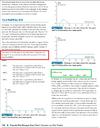Hi,
I am wondering what is terminolgy regarding key-rate exposures, Partial '01s, key rate 01s (KR01s)?
On page 168 of "Valuation and Risk Models", it is said that "...The impact of shifts, such as the ones shown in Figures 13.2 through 13.4, are sometimes referred to as partial 01s or key rate 01s (KR01s)." This, I think, implies that they are synonyms?
However, in the Bionic Turtle Mock Exam 1, question 40, in the answer it is said that:
"Partial ’01s are used for measuring and hedging the risk of portfolios of swaps or portfolios that contain both bonds and swaps in terms of the most liquid money market and swap instruments. As these instruments are almost always those whose prices are used to build a swap curve, the number of securities used in this methodology is usually greater than the number used in a key-rate framework."
So, is key-rate framework used for key-rate '01s? If no, what is key-rate framework used for? If yes, is GARP mistaken when they are referring to partial 01's as key rate 01's?
And finally, what is the key rate exposure? Per my experience, key rate exposure is used (maybe mistakenly) in real world as a synonym for key rate duration i.e. sensitivity of a bonds to a specific point along the yield curve.
I am wondering what is terminolgy regarding key-rate exposures, Partial '01s, key rate 01s (KR01s)?
On page 168 of "Valuation and Risk Models", it is said that "...The impact of shifts, such as the ones shown in Figures 13.2 through 13.4, are sometimes referred to as partial 01s or key rate 01s (KR01s)." This, I think, implies that they are synonyms?
However, in the Bionic Turtle Mock Exam 1, question 40, in the answer it is said that:
"Partial ’01s are used for measuring and hedging the risk of portfolios of swaps or portfolios that contain both bonds and swaps in terms of the most liquid money market and swap instruments. As these instruments are almost always those whose prices are used to build a swap curve, the number of securities used in this methodology is usually greater than the number used in a key-rate framework."
So, is key-rate framework used for key-rate '01s? If no, what is key-rate framework used for? If yes, is GARP mistaken when they are referring to partial 01's as key rate 01's?
And finally, what is the key rate exposure? Per my experience, key rate exposure is used (maybe mistakenly) in real world as a synonym for key rate duration i.e. sensitivity of a bonds to a specific point along the yield curve.

